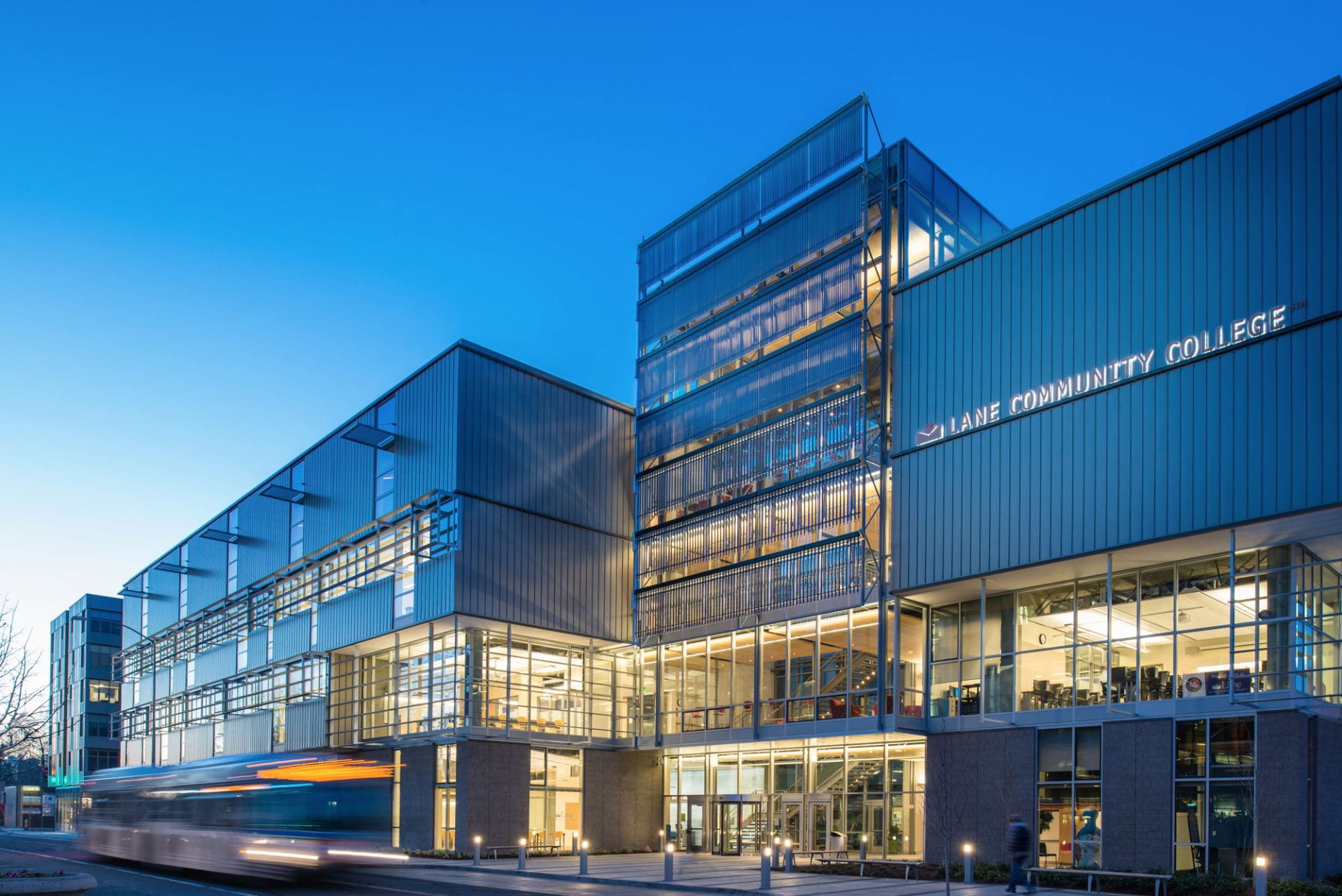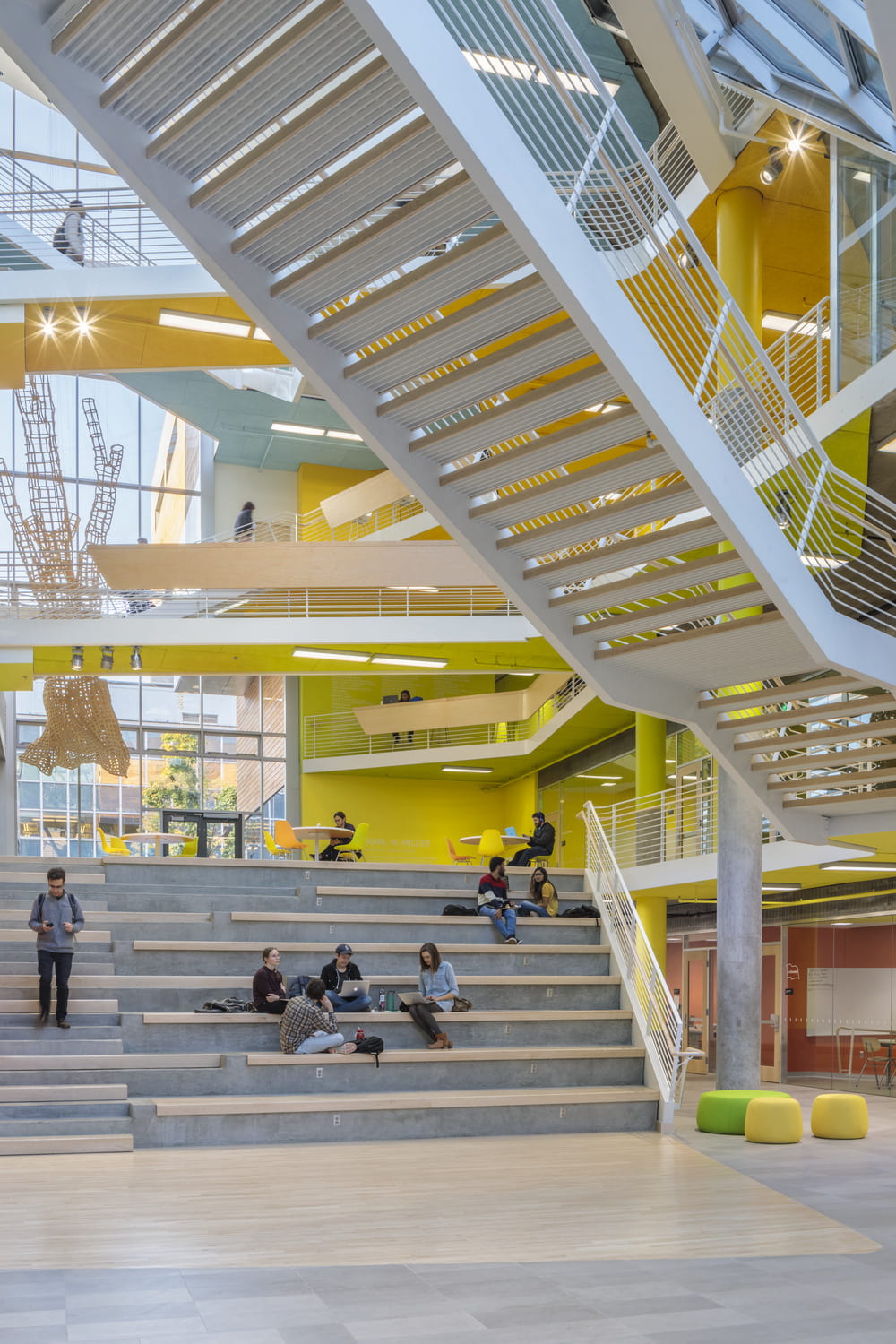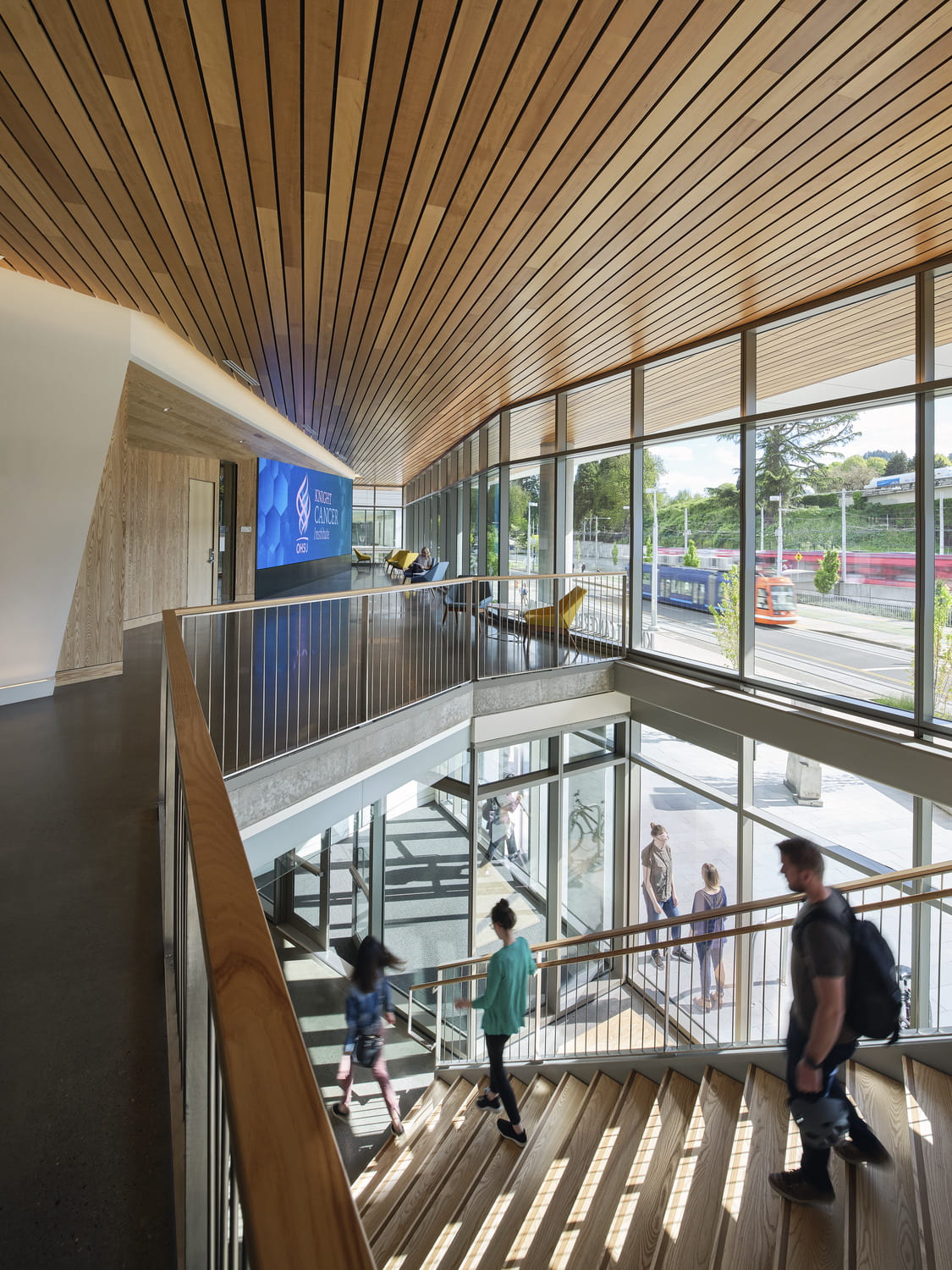We sat down with founding Consortium Member, SRG, to discuss their firm, passions, projects and their ongoing efforts to design for energy efficiency and health.
Who is SRG?
SRG Partnership, Inc. is an award-winning, 75-person design firm providing programming, planning, architecture and interior design expertise from offices in Portland and Seattle. Founded in 1972, we remain true to our original mission: to elevate design as a shared value. More than buildings or projects, we recognize our work as opportunities to transform communities by creating meaningful places in which people learn, live and thrive now and into the future.
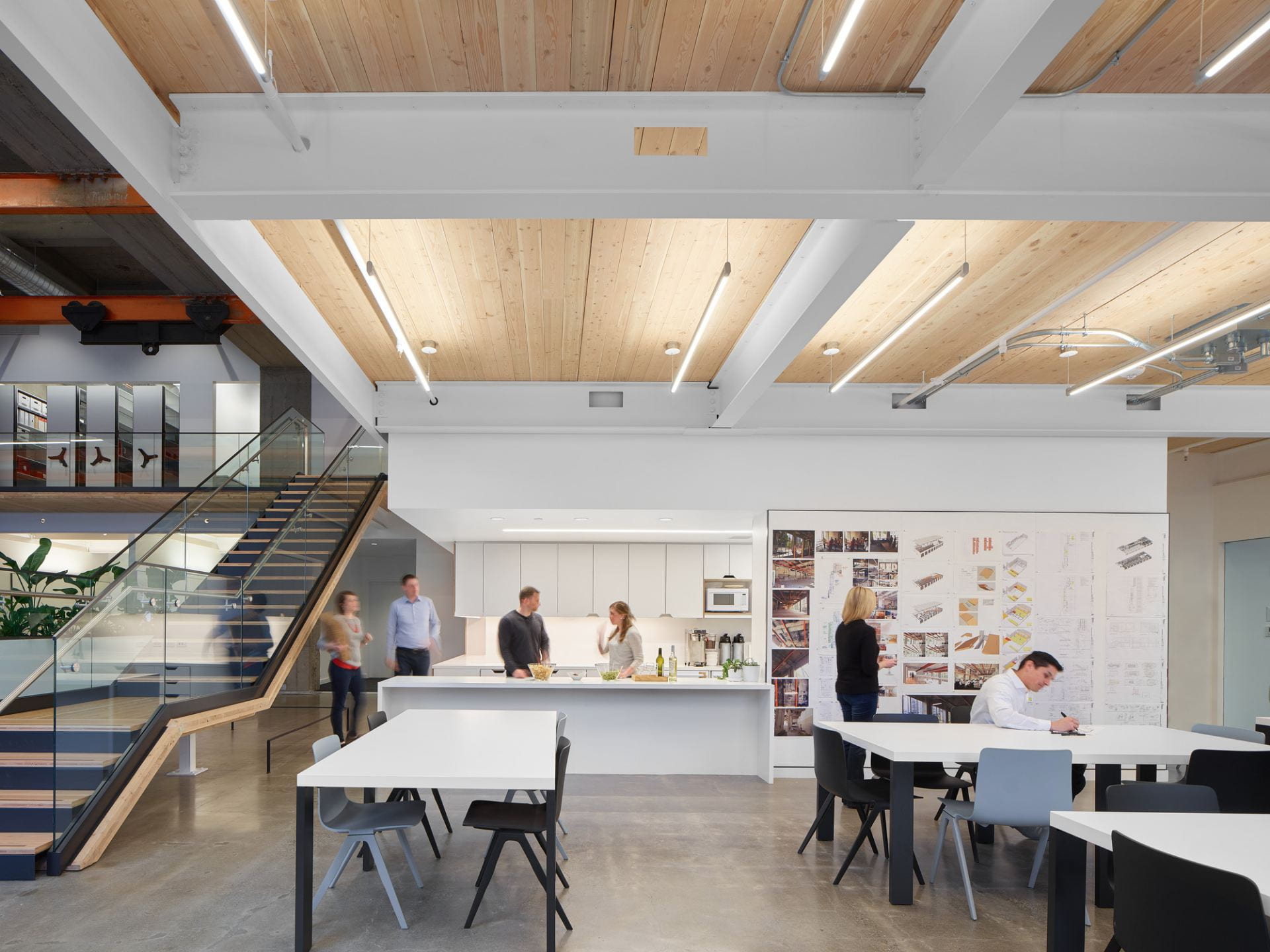
SRG Studio, Photo by ©ChristianColumbres (christiancolumbres.com)
Over the years, SRG has expanded to include a wide range of specializations: sports and fitness, civic and cultural, education, research, healthcare, urban design, master planning and sustainable design. We are nationally recognized for our research-based approach and innovations in sustainable design, fueled by our mission and passion to create enduring and impactful environments while achieving our clients’ highest aspirations.
What is SRG passionate about?
Innovating the design industry. As a firm deeply rooted in the Northwest, we hold high regard for our region’s connection to nature and its value of health and well-being. This influence contributes greatly to our passion to bring healthy living influences into the built environment, using research to inform our sustainable design approach. Research is embedded in our culture and history and has proven to be the cornerstone of our success, delivering cost-effective, high-performing buildings. By maintaining a big-picture perspective of the design industry as a whole, not just individual buildings, we have been able to evolve as a firm and elevate projects to groundbreaking levels that are taking critical approaches to what it means to create environments that are enduring, carry a light footprint, and positively impact users’ health. We have come to prioritize comfort as a primary driver of people’s experience of space. The range of this impact has affected our design decisions in areas of community, healthy environments, biophilia, building materials and more.
Our research takes two basic forms:
- Research to test and validate strategies during design. Our 20-year research collaboration with the University of Oregon’s Energy Studies in Buildings Laboratory (ESBL), ultimately leading to our collaborative founding of the Institute for Health in the Built Environment (IHBE), has allowed us to explore and test a variety of innovative day-lighting, energy and water usage strategies on more than 100 projects, as well as to team with different manufacturers in developing products that enhance building performance.
- Post-occupancy evaluations that measure how our sustainable design strategies perform. As a key part of our design approach, we have developed sophisticated modeling capabilities that help us optimize our sustainable design practices as well as predict building performance. Measuring how these strategies perform enables us to continue to improve the effectiveness of our strategies, as well as fine-tune our modeling capabilities so that our performance predictions are as accurate as possible.
The value of knowledge sharing. The Consortium has provided many benefits in terms of broadening our expertise, drawing upon the research findings of a diversity of scientific disciplines, design professionals, engineers, energy experts and more. This speaks to the far-reaching impact of those committed to research and innovation, as well as the synergy that occurs when knowledge is shared within a collaborative and diverse forum. We believe that once we step outside the bounds of mere building science, we can embrace all that multiple skill sets and broader areas of expertise have to offer.
What are some examples of innovative projects your firm has worked on that have contributed to health in the built environment, energy efficiency or both?
University of Oregon Lillis Business Complex. This 2003 landmark facility, the first LEED-certified business school in the nation at the time of its completion, was the first project SRG engaged in with the ESBL and ultimately blazed the trail of the lasting collaboration we share today. Together SRG and the ESBL identified a series of fundamental strategies to create a high-performing building. Effective daylighting reduced lighting and cooling loads, while natural ventilation strategies passively cooled the building. Incorporating thermal mass and ceiling fans expanded occupants’ comfort range by five degrees and, combined with night flushing, allowed for comfort in the absence of a mechanical cooling system. The net result was a 140,000sf building that is 43% more efficient than the Oregon Energy Code and that, in extreme conditions, requires mechanical cooling only four evening hours out of the entire calendar year.
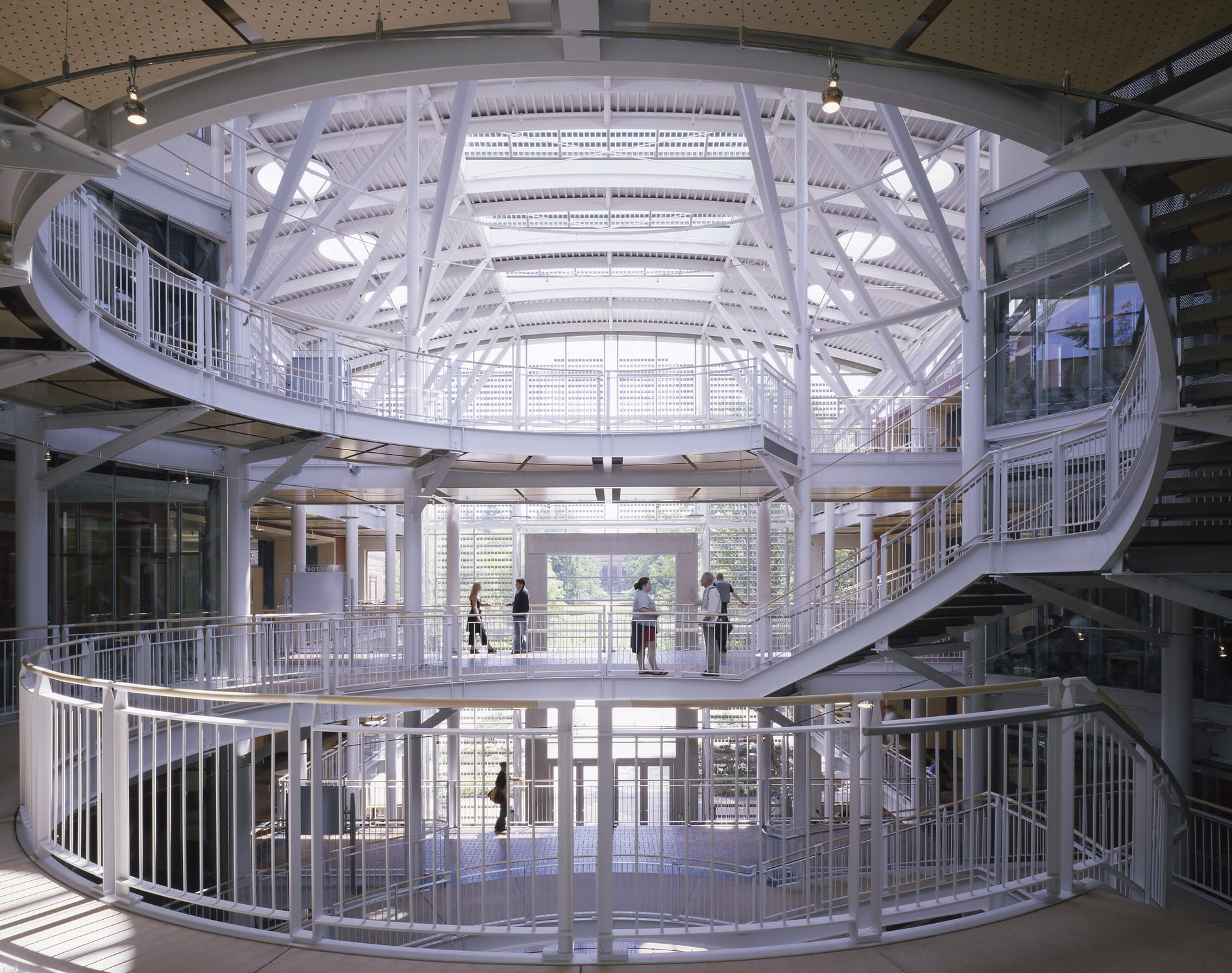
Lillis Interior, Photo by Lara Swimmer (www.swimmerphoto.com)
Numerous studies have also been performed on the Lillis Business Complex to gauge its health; it became the subject of a project by the UO Biology and the Built Environment Center (Bio-BE) and ESBL studying microbial communities within buildings and their impact on human health. Three hundred locations were swabbed within Lillis to differentiate between microbial communities in spaces served by natural ventilation versus those served by mechanical ventilation. The microbial community in the mechanically ventilated spaces was found to be similar to those associated with humans, while the microbial community in the naturally ventilated spaces was determined to be similar to that of the soil and water outside the building.
Mount Angel Abbey. For the Annunciation Academic Center at Mount Angel Abbey, completed in 2006, the monks challenged us to use daylight as much as possible and to achieve comfort without an active cooling system. Working with ESBL, we developed a combination of a skylight with operable louvers and a daylight reflector suspended below it to create evenly distributed daylight throughout the classroom setting. The result was that 95% of the time the building is in use during daytime hours, no electric lighting is required. Each classroom also features natural ventilation and passive cooling, individually controlled based upon occupancy and temperature. The 21,000sf building remains comfortable year-round, has no active cooling system, and is heated by a boiler smaller than an under-desk file cabinet. The Academic Center is 62% more efficient than the Oregon Energy Code.
Lane Community College Downtown Center. The award-winning Downtown Center was the first building on a new downtown campus for the College, greatly expanding its urban presence in Eugene and introducing a significant amount of student housing. The facility is composed of two interlocking “L”-shaped buildings surrounding a central courtyard, one a LEED Platinum academic building and the other LEED Gold student housing. The academic building welcomes students with a dramatic 4-story glass entry façade screened with glass solar tubes that generate energy for 70% of the hot water used by the 255-bed student housing. Our work with the ESBL enabled the academic building to be the first project to feature daylighting control louvers on the skylights which responded directly to classroom occupancy. The louvers open fully when a person walks in, then adjust 5 degrees at a time until the ideal room light is achieved (between 20 to 45 footcandles in this case). The ESBL wrote the code to drive the sensing system, working closely with the manufacturer to achieve this groundbreaking feature amongst its numerous sustainable merits.
Chemeketa Community College Health Sciences Complex. This renovation and addition to the College’s existing health science building addressed a growing allied health program and a shortage of space. The 72,000sf addition eliminated mechanical cooling and uses passive cooling strategies, resulting in 60% less energy use than code and a savings of nearly $35,000 a year in operational costs as compared to a baseline facility. Along with boasting successful passive ventilation strategies, the project marks the first time SRG, in partnership with the ESBL, designed a 2-story building and harvested daylight to illuminate lower-level classrooms. This was achieved through innovative light shafts servicing one-third of each classroom combined with clerestory windows providing light for the other two-thirds. In addition, the team researched the specific tint of the electrochromic glass skylights of the upper-level classrooms. Light from the skylights is channeled with reflectors to the sloped ceiling, and then to the desktops. After much testing and research, it was determined that a violet-colored glass tint provided the truest color rendition for optimal visibility in the classroom environment.
Portland State University (PSU) Karl Miller Center. A renovation of a six-story, 40+-year-old building as well as a new, five-story addition, the new home of PSU’s School of Business offers a 42% increase in square footage to the PSU campus while projecting to reduce energy usage by more than 50%. The design incorporates passive cooling; regionally sourced materials; five eco-roofs, including two accessible terraces; and an 80% reuse of the existing structure in the renovation. Design strategies that engage massing and connections to existing formal and informal campus and City of Portland circulation enliven active learning and community activity within and surrounding the building. The Center generates its own vibrancy as a social and knowledge-share hub while offering a more diverse streetscape and enriching the campus and adjacent downtown fabric. The LEED Platinum project advances PSU‘s dedication to social, economic and environmental sustainability.
SRG Portland Studio. Designing our workplace presented a prime opportunity to take all we have learned on our clients’ projects and pour it into the 17,054sf studio renovation our Portland employees now call home 40+ hours of the week. Extensive research went into creating a space rich in biophilic principles to improve air quality, health and overall well-being. Targeting LEED Platinum, the office is bathed in natural light and uses 58% less energy than a median office building in our climate, with the office’s LED lighting boasting 68% less energy use than a typical building. Ceiling fans assist in comfort levels, while an open, collaborative workplace environment promotes innovation and dynamic connections amongst colleagues. The Living Building Challenge Materials Petal guided our product and materials selection, which is mostly Red List Free, and sustainably harvested cross-laminated timber is integrated throughout.
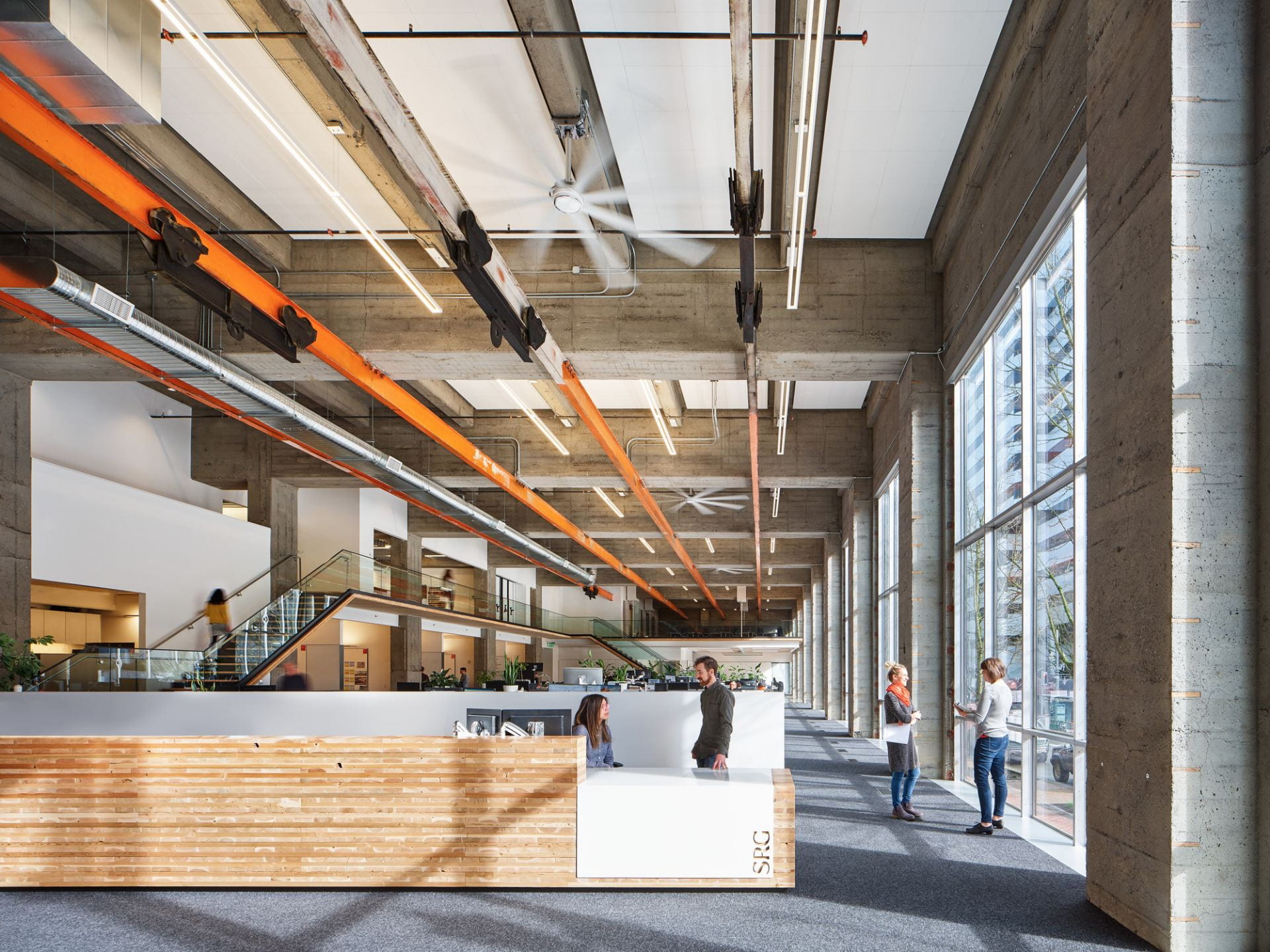
SRG Studio, Photo by ©ChristianColumbres (christiancolumbres.com)
OHSU Knight Cancer Research Building. Situated on Portland’s South Waterfront, this newly complete LEED Platinum laboratory building prioritized not only energy efficiency, but healthy materials, looking to collaborative research with the ESBL for critical design decisions. Given that many building materials contain carcinogens, it was a priority for the researchers occupying the building to avoid building materials that can cause cancer. As ongoing research is being conducted on chemical reactions with building materials, we developed a system of prioritizing those materials based on their harmful impact, assigning a score to each material before making decisions about whether or not to include it in the project.
Glenwood Parking Garage. This innovative four-story, open-air 200,000sf parking structure design in Springfield, OR, incorporates cross-laminated timber and is designed to be net positive for energy and water. Concerned about wind-drawn rain causing damage, we engaged researchers from ESBL and the Tallwood Design Institute to explore how to best keep the wood dry to ward off the microbes, fungi and insects that could easily contribute to its decay. The ESBL’s research determined which way the wind typically blows when it rains and how hard, which informed how we would shelter the wood structure. Tallwood Design Institute researchers investigated potential membranes and traffic coatings to protect the CLT floors at each parking level, and identified breathable coatings to protect the CLT comprising the structure’s columns, beams, floor panel undersides, and post-tension rocking shear walls to guard against water damage.
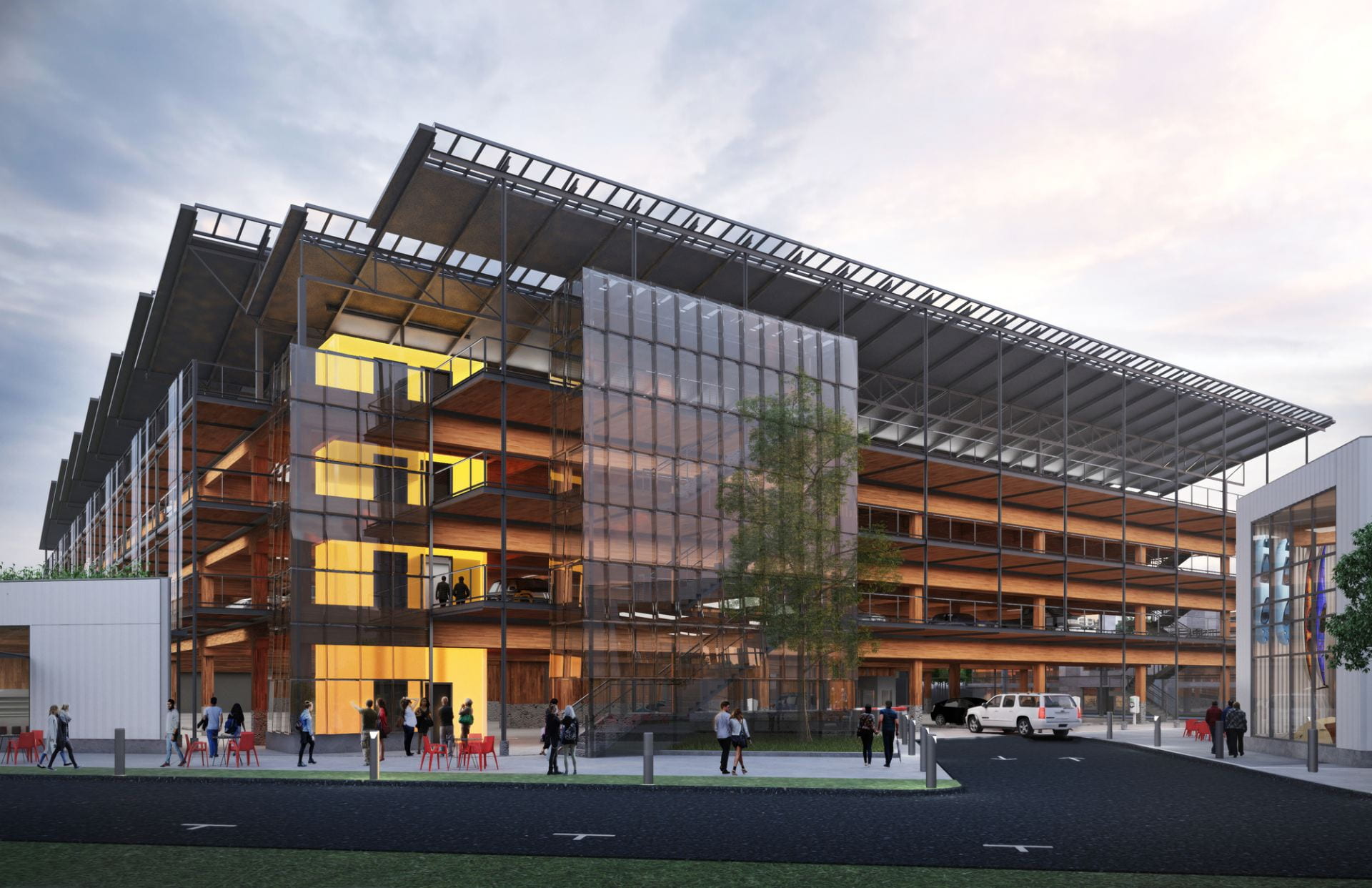
Glenwood Parkwood Garage, Rendering by SRG Partnership, Inc.
What does SRG hope to achieve through research and industry/academia collaboration?
With so much research being done and so many questions left unanswered, we continue to advocate for collaborative interdisciplinary events and synergies; answers to these questions will keep raising the standards for how we design and build. Reflecting upon the impact our collaboration with ESBL and IHBE has had upon consulting engineers, contractors, subcontractors and owners who now expect a higher level of performance, we see the great potential research has to transform the buildings we occupy. We believe that the more the research and design communities can engage one another, the more we can create innovative and healthy spaces for working and playing, living and learning.
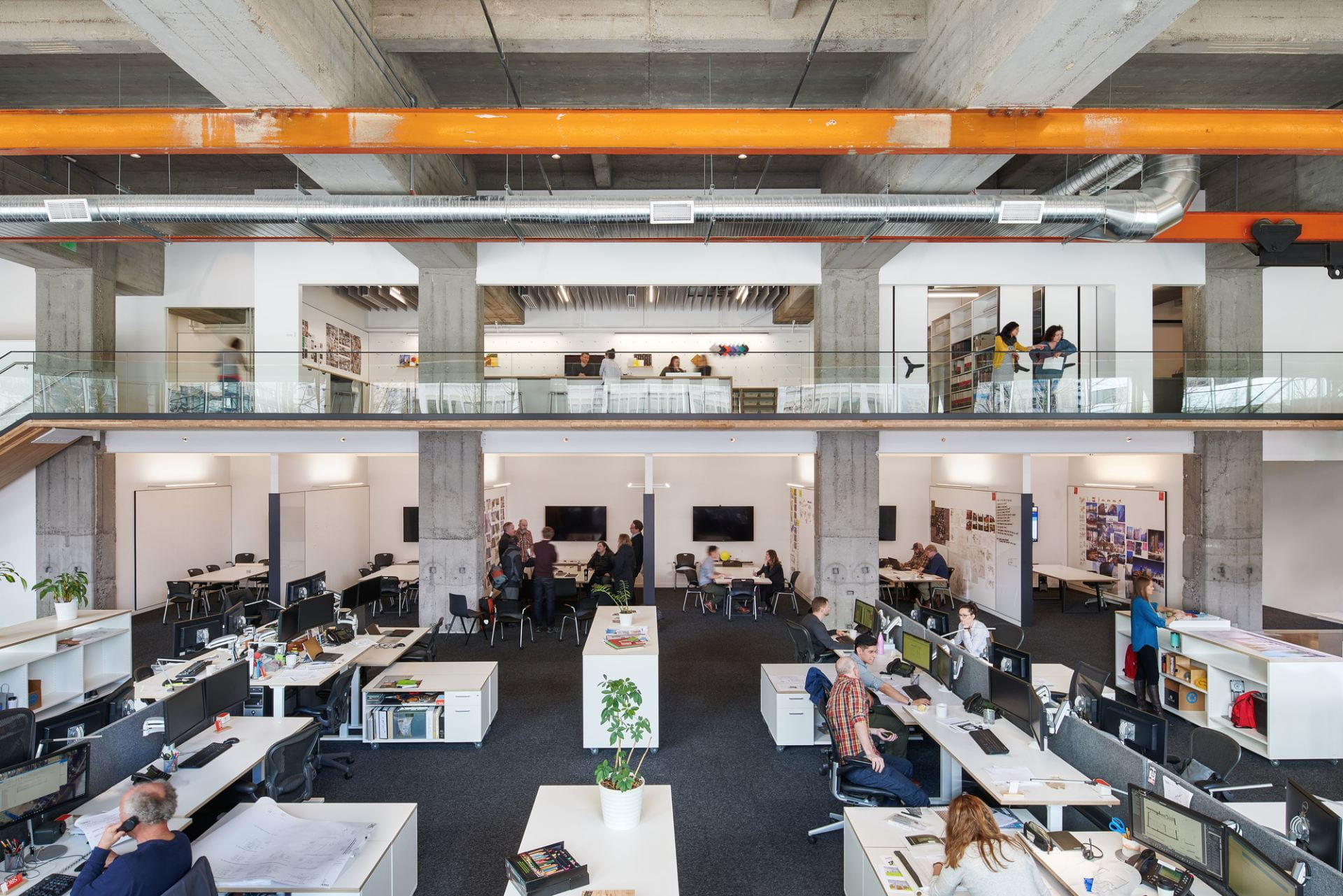
SRG Studio, Photo by ©ChristianColumbres (christiancolumbres.com)


